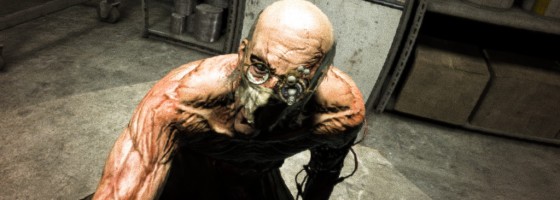In honor of Halloween last week, I want to talk about some horror games, but with a twist. Instead of talking about some of my favorite scares, I want to talk about some games that failed for one reason or another to make me scared while playing. This should be interesting as examining what went wrong can be a great lesson for designers. And to start thing off I turn to a horror game that didn’t work due to frustration over fear.
Outlast:
Outlast and its expansion were both in the style of the player being helpless. Set in a rundown asylum, the player must find a way out while being stalked by insane inmates and other things.
In terms of graphics, Outlast looked really good for being set in a rundown building and on aesthetics alone, it would have been a great horror game. Everywhere has that lived in feeling along with signs of destruction that really paints a great setting for a horror title.
The designers kept encounters to the minimum with the player being tracked by enemies in specific situations. If the player was spotted, they would have to get away and hope to avoid the enemy finding them as they had no plan b. Some enemies would simply hurt the player while others would kill them upon catching them. Adding to the tension was the fact that the game only saved at specific checkpoints so you couldn’t just quick save your way out of trouble.
Up to this point, Outlast sounds like a winner– a terrifying game of hide and seek in a run downed mental hospital. But when it comes to playing the game, the developers made a critical mistake when it comes to making the player too weak and where frustration comes in.
Fumbling in the Dark:
I talked about this in my analysis of Outlast but the big killer of the game for me was the camcorder mechanic. Your only source of light in the game was from your camcorder which could be turned to a low level night vision mode or a full on flashlight. The camcorder would drain batteries like nobody’s business and you had to keep looking around for them.

Trying to find anything in the dark becomes near impossible and happens far too often for my liking.
Run out and all you could do was wander around in the dark and hopefully find a battery.
This is similar to Amnesia’s lantern mechanic except lighter fluid was easy to find and the game was light enough that you could find your way without it. In Outlast, run out power and you’ll be literally in pitch black darkness.
And that ruined the game for me as I was more concerned about running out of battery power than I was about the crazy psychos coming to get me. And I did run out of power and my only recourse was trying to figure out where I was going using the distorted green of the night vision mode. After about ten minutes of this, I got a horrible headache and said “done.” Instead of turning off the game from terror, I turned it off out of sheer frustration and annoyance. The lesson here is that there is a limit to how weak the player should be even if it is a horror game.
Frail Power:
As we’ve talked about previously, good horror design requires the player to feel weak and powerless. But there are limits to how weak the player should be and you need to avoid arbitrary weaknesses. With Outlast, the player was already incapable of fighting back or doing anything and that was enough. Taking away the player’s ability to see didn’t make the game scary; it just punished them for not moving quickly enough or having a poor monitor resolution.
This is where the balance comes in regarding player’s strength — Make the player too strong and the game becomes boring, too weak and they become frustrated. Outlast is definitely a case of the later and what’s worse is that without having enough mechanics in place, the game starts to feel very samey as time went on. Since the player’s only option is to run and hide, all the encounters play out the same way, just in different environments.
Up next, we have a game that turned the “wtf” factor up to 11 but a lesson that there is a thing about being too mysterious.


